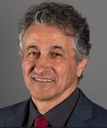ERC Advanced Grants for Laserlab Researchers
ERC Consolidator Grants for Laserlab Researchers >>>
ERC Starting Grants for Laserlab researchers >>>
ERC Synergy Grants for Laserlab researchers >>>
2023
|
Majed Chergui (FERMI): X-ray spectroscopy of molecular chirality in solutions Majed Chergui, founder of the LACUS centre at EPFL, has recently won an ERC Advanced Grant for his project “CHIRAX: X-ray spectroscopy of molecular chirality in solutions”, which aims at implementing steady-state and time-resolved X-ray circular dichroism to resolve molecular structures and their evolution with element specificity. The research will in addition further develop new tools using the orbital angular momentum of X-ray light to perform helical dichroism studies. |
|
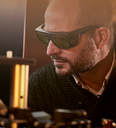
|
Morgan Mitchell (ICFO): Field sensors with exceptional energy resolution Morgan Mitchell has recently been awarded an ERC Advanced Grant for the project “Field-SEER: Field Sensors with Exceptional Energy Resolution”. In this project, he will develop magnetic sensors with combined spatial, temporal, and field resolution beyond what is possible with existing sensing approaches. Ultra-high-coherence media, including Bose-Einstein condensates and optically-addressed nuclear spin ensembles, will be developed as sensors for application in fundamental physics and bio-magnetism. |
|
Niek van Hulst (ICFO): Photons and electrons on the move Niek van Hulst received his third ERC Advanced Grant for his project entitled “FastTrack: Photons and electrons on the move”. In this new project, he will investigate the dynamic organisation of the natural light-harvesting membrane architecture, its packing order, diffusion, and re-organisation in response to light stress. The research will address questions related to which pathways are taken to charge separation and the role of fluctuations, coherences, input-spectra and vibrations. |
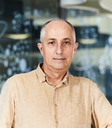
|
2022
|
Nathalie Picqué (MPQ): Precision measurements in molecules with frequency combs With her ERC Advanced Grant, Nathalie Picqué explores a new concept of precision measurements with frequency combs. A revolutionary spectrometer will simultaneously achieve broad spectral coverage, Doppler-free resolution and extreme accuracy for precise studies of small molecules. The unprecedented degree of control of frequency combs achieved in this way could also open up new experimental possibilities for the study of highly non-linear phenomena in strong-field and attosecond physics. |
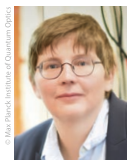 |
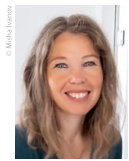 |
Olga Smirnova (MBI): Ultrafast molecular chirality: twisting light to twist electrons on ultrafast time scale Chiral molecules exist in pairs of non-superimposable “mirror twins” called enantiomers. The specific stereo arrangements of their nuclei underlie their key functions in chemistry and biology. Yet, little is known about chiral molecular interactions at the level of electrons, occurring on ultrafast time scales. Developing extremely enantio-sensitive, ultrafast and all-optical approaches to track electronic dynamics is an important unsolved challenge. |
2019
|
Anne L’Huillier (LLC): Quantum Physics with Attosecond Pulses Using attosecond laser pulses as a "camera flash", it is possible to study the fundamental interactions of our physical world, such as the motion of an electron as an atom is ionised. With her new ERC Advanced Grant, Anne L'Huillier intends to push this incredible technique even further, by characterising the quantum properties of the electron (or electrons) ionised by absorption of attosecond pulses. This is the third time that Anne L’Huillier has received an ERC Advanced Grant. Instead of photons, atoms or ions as in conventional quantum optics, the new project will study electron "wave packets", generated by absorption of attosecond laser pulses. The aim of the project is to characterise the quantum state of these wavepackets, to realise multiple slit experiments in the temporal domain, and to study entangled two-electron wavepackets. It is hoped that this will shed new light in quantum physics given the originality of the studied systems and the versatility of the experimental tools, enabling four-dimensional information (momentum and time) for one or two particles. “I am very pleased. It is a very, very nice feeling to be awarded this grant. It will be both demanding and exciting”, says Anne L’Huillier. |
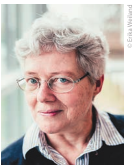 |
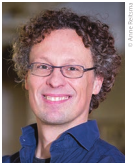 |
Gijs Wuite (LLAMS): Mechanically mapped chromosomes Optical tweezers are a tool for manipulating micro- scopic objects using a beam of light. When the light diffracts through the object, it imparts a force which acts to center it in the beam. This has enabled extremely precise manipulation of microscopic objects, which can be combined with precision microscopy to give new insight into their exact shape. Gijs Wuite has used this technique to attach microscopic spheres to specific points on complex molecules, such as DNA which has been extracted from a cell and kept in physiological buffer, enabling them to be moved and deformed in very precise ways. Chromosomes (the compact organisation of DNA just before cells divide) are found in every cell, and in diseased cells (cancer in particular) they will have an abnormal composition and structure. By imaging and mechanically mapping chromosomes, it is possible to learn about these abnormal structures. Wuite plans to use his new ERC Advanced Grant to expand his research group to address this question. “There are currently only two of us working on this project. The grant gives us the opportunity to hire five extra researchers and considerably expand our line of biophysics of chromosome research.” |
2018
|
Maciej Lewenstein (ICFO): New applications of quantum simulators Quantum simulators are experimental systems mimicking complex models of, for example, condensed matter and high-energy physics. Such quantum simulators can be realised on various platforms, ranging from ultracold atoms and ions to Josephson junctions or superconducting qubits. |
©E. Blanco |
|
Theo Kitsopoulos (IESL-FORTH):Slice imaging to understand catalysis Catalysis and catalytic processes account, directly or indirectly, for 20-30 % of world gross domestic product. In order to optimise these important chemical processes, knowledge of elementary chemical reaction mechanisms in heterogeneous catalysis (where molecules in different states of aggregation interact with each other) is needed to construct comprehensive kinetic models. |
|
Thomas Elsaesser (MBI): Probing DNA and RNA charge dynamics Biological macromolecules exist in an environment of water molecules and solvated ions, where electric water dipoles and charged ions exert electric forces on the biomolecules and, thus, strongly influence their structure and biological function. Understanding such interactions at the molecular level is a major scientific challenge; presently, their strengths, spatial range and interplay with other non-covalent interactions are barely known. |
©R. Guenther |
©ICFO |
Antonio Acín (ICFO): Certification of quantum information systems Currently, complex many-body quantum systems are prepared in many labs worldwide, and quantum information technologies are making the transition to real applications. The concept of quantum certification covers the questions of ensuring entanglement, randomness, and security of these quantum information systems, as well as whether the performed quantum calculations are indeed correct. |
|
Jens Limpert (HIJ): Compact lasers as alternative to synchrotron facilities High-quality radiation in the terahertz and mid-infrared spectral range can, for example, be used for non-destructive investigation of complex materials and detection of diseases in the human body, respectively. However, the radiation provided by current laser-based sources is not yet of sufficiently high quality for these practical applications. At the moment, large-scale research facilities such as synchrotrons are still needed for this kind of |
©Leistungszentrum Photonik, Jena |
2017
|
Julien Fuchs (LULI): Extreme neutrons for nucleosynthesis The heaviest elements found in our Solar System and in stars are believed to have been formed by what is known as the “r-process” of nucleosynthesis, where multiple neutrons are squeezed into a nucleus at the same time. At present, however, there are large discrepancies between the observed element abundances in stars and those found in simulations. It is speculated that this problem stems from the uncertainties in nuclear parameters, particularly in the plasma environment. These parameters have not been verified experimentally, because the flux of current neutron facilities is insufficient, and there is as yet no means to create on-site hot and dense plasmas. In his ERC Advanced Grant project GENESIS, Julien Fuchs will aim to perform the first direct measurements of neutron capture and beta-decay rates related to the r-process, exploiting the upcoming generation of multipetawatt lasers. Those lasers could be used to generate neutron beams of extreme brightness, with a flux comparable to that found in Supernovae. |
|
Maria García-Parajo (ICFO): Mechanical forces inside the cell membrane Through evolution, cells have developed the exquisite abil- ity to sense, transduce and integrate mechanical and biochemical signals (i.e. mecha- nobiology) to generate appropriate responses. These key events are rooted at the molecular and nanoscale levels, a size regime difficult to access, hindering our progress towards mechanistic understanding of mechanobiology. Recent evidence shows that the lateral nanoscale organisation of mechanosensitive membrane receptors and signalling molecules is crucial for cell function. Yet, current models of mechanosensing are based on force-induced molecular conformations, completely overlooking the chief role of mechanical forces on the nanoscale organisation of the plasma membrane. The goal of Maria García-Parajo’s ERC Advanced Grant project NANO-MEMEC is to provide understanding on the role of mechanical and biochemical stimuli in the remodelling of adhesion mechanisms at the cell membrane. To overcome the technical challenges of probing these processes at the relevant length- and timescales, she will exploit cutting-edge biophysical and nanophotonic tools exclusively developed in her lab, which combine super-resolution optical nanoscopy and single-molecule dynamics in conjunction with simultaneous mechanical stimulation of living cells. |
©ICFO |
©ICFO |
Javier García de Abajo (ICFO): Free electrons as ultrafast nanoscale probes According to the laws of quantum mechanics, the principles of nanophotonics can be extended from photons to electrons. This means that the wave nature of electrons can be exploited to gain in spatial resolution (because electrons have a much smaller wavelength than photons), and use can be made of the stronger, even non-linear interactions mediated by Coulomb fields. In his ERC Advanced Grant project eNANO, Javier García de Abajo intends to start the new field of free-electron nanoelectronics, where electrons evolving in the vacuum regions defined by nanostructures will be generated, guided, and sampled at the nanoscale. In this way, these free electrons will act as probes to excite, detect, image, and spectrally resolve so-called polaritonic modes (i.e., quantum phenomena such as plasmons, optical phonons, and excitons) with atomic precision over sub-femtosecond timescales. He will develop the theoretical and computational tools required to investigate this unexplored scenario, covering a wide range of free-electron energies, their elastic interactions with the material’s atomic structures, and their inelastic coupling to nanoscale dynamical excitations. The project will bring together a multidisciplinary theory group, in close collaboration with leading experimentalists, aimed at pursuing a radically new approach to study and control the nanoworld. |
|
Jens Biegert (ICFO): Real-time observation of transformations and transitions The ability to synthesise and to tailor substances and ma- terials with specific function has huge impact on modern society. In this context, a firm understanding of structural transformations of molecules and phase transitions of solids is vital, as they are omnipresent, e.g. as formation and breakage of molecular bonds, proton motion and isomerisation, and as collective phenomena in phase transitions. In Jens Biegert’s ERC Advanced Grant project TRANS - FORMER, he aims to provide unprecedented insight into the real-time electronic and nuclear dynamics of molecular transformations and phase transitions. The project will exploit attosecond soft X-ray spectroscopy (XAFS) and laser- induced electron diffraction (LIED) to pinpoint in real-time which electronic states participate at which nuclear configuration. Employing the two methods, he aims to establish the boundaries for space-time imaging of isolated molecules with application to molecular isomerisation. In condensed phase, attosecond X-rays will be used to study effects such as the metal-to-insulator phase transition. Simultaneous and real-time electronic and nuclear information will be extracted, in order to gain insight into the underlying many-body quantum correlations. |
©ICFO |
|
Erik Nibbering (MBI): Soft-X-ray spectroscopy of acids and bases How acids and bases react in water is a question raised since the pioneering days of modern chemistry. Recent decades have witnessed an increased effort in elucidating the microscopic mechanisms of proton exchange between acids and bases and the important mediating role of water in this. Using ultrafast spectroscopy it has been shown that the elementary steps in aqueous proton transfer occur on femtosecond to picosecond time scales. Aqueous acid-base neutralisation predominantly proceeds in a sequential way via water bridging acid and base molecules. Complementing spectroscopy in the ultraviolet to infrared range, soft-X-ray absorption spectroscopy (XAS), probing transitions from inner-shell levels to unoccupied molecular orbitals, can be used to monitor electronic structure with chemical element specificity. Within his ERC Advanced Grant project, Erik Nibbering aims to develop steady-state and time-resolved soft-X-ray spectroscopy of acids and bases. Here novel liquid flatjet technology is utilised with soft-X-ray sources at synchrotrons as well as table-top laser-based high-order harmonic systems. Resolving the electronic structural dynamics of elementary steps of aqueous proton transport will furthermore elucidate the role of mediating water in bulk solution, and in specific conditions such as hydrogen fuel cells or trans-membrane proteins. |
|
Erwin Peterman (LLAMS): Fluorescence microscopy to study cilia in live worms Many cells in our body are equipped with cilia, antenna-like protuberances that are used to detect chemical, mechanical or optical signals from the environment. In the past few years, quite a few diseases, so-called ciliopathies, have been found where cilia play a central role. In his ERC Advanced Grant project, Erwin Peterman will study the relation between the cilium’s function, its structure and a specific continuous transport mechanism inside the cilium. Peterman’s group already found that this intraflagellar transport is intricately connected to the length of the cilium and to signal detection. By studying the taste cilia of the roundworm C. elegans he will try to further elucidate how cilia are able to extract information from their environment. His team will use advanced fluorescence microscopy in live worms to follow structural dynamics, such as intraflagellar transport. With these optical techniques individual receptors can be visualised in live worms and their location will be followed over time. The worms will be exposed to several different chemicals in order to see how the worms, cilia, and intraflagellar transport respond to external stimuli. This approach should yield quantitative information which could hopefully be used to address ciliopath |
©Anne Reitsma |
2016
|
Thomas Udem (MPQ): High Resolution Extreme Ultraviolet Laser Spectroscopy At the precision frontier of Quantum Electrodynamics (QED), comparisons between theory and experiment have so far been performed almost ex clusively with atomic hydrogen. According to Thomas Udem, it is of fundamental importance to proceed to other, hydrogen- like systems that can be computed with very good accuracy. In his ERC Advanced Grant project, Udem therefore proposes to study singly ionised helium (He + ) with high resolution laser spectroscopy. In addition of representing a hitherto unexplored system, he argues, He + allows for a far better test than atomic hydrogen due to the QED power series expansion of its energy levels in terms of Zα. With the nuclear charge Z and the fine structure constant α, the disputed terms are of the order of (Zα) 6 . Unlike ordinary hydrogen, He + can be readily stored in an ion trap and sympathetically cooled by co-stored ions with an accessible cooling transition. This approach eliminates essentially all dominating experimental uncer - tainties that are faced with ordinary hydrogen today. The 1S-2S resonance is the sharpest and hence most interest - ing transition. Its observation requires highly coherent ex - treme ultraviolet radiation at 60.8 nm, which can be gener - ated through high-order harmonics from a mode-locked laser. The resulting frequency comb is most suitable for a two-photon transition, as photons from pairs of modes can combine to deliver the excitation energy. According to Udem, other applications of such a new laser source are foreseeable as well. |
|
Ignacio Cirac (MPQ): Quantum Emitters in Non-conventional Baths The coupling of two-level quantum emitters to a zero temperature electromagnetic reservoir (or bath) is a central problem in quantum optics. For a single emitter, the bath, having infinite degrees of freedom, may induce dissipation (via spon- taneous emission), and other basic phenomena of Quantum Electrodynamics, like Lamb shifts. For many emitters, it may lead to collective phenomena, such as superradiance and dipole-dipole interactions. If the electromagnetic bath has some structure – meaning it has a non-linear dispersion relation, with gaps at certain energy intervals – new and intriguing phenomena may arise. This holds even more so for a bath with a tailored dispersion relation for the electromagnetic field. These unconventional baths can be found, for instance, in photonic crystals made of dielectric materials, where the (quasi)periodic structure gives rise to dispersion relations in the bath akin to those occurring in solid state physics. Thanks to the advances in nano-fabrication, it is possible nowadays to build photonic crystals with arbitrary patterns, and thus to tailor the dispersion relations. In his Advanced Grant project, Ignacio Cirac will develop new theoretical techniques in order to investigate the physics of emitters coupled to these unconventional baths. In addition, specific physical setups will be proposed and analysed, starting with atoms close to photonic crystals. |
©Thorsten Nasser |
2015
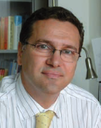 |
Exchange of information between different brains usually takes place through the interaction between bodies and the external environment. In his Advanced Grant project, Francesco Pavone (LENS) and his team will try to establish brain-to- brain communication based on full-optical recording and controlled stimulation of neuronal activity in different subjects. As a first step, whole-brain high-resolution imaging in zebrafish larvae will be performed to identify activity patterns related to different tasks. This data will then be used as stimulation patterns in other larvae, in order to gain insight in the complex relationship between neuronal activity and subject behaviour. In addition, brain patterns of mice that recover quickly from strokes will be used as neural activity templates for other animals, as a form of rehabilitation therapy that might eventually be used in humans. |
| In 2010, the CREMA collabora- tion uncovered discrepancies in the energy level structure of muonic hydrogen (where the electron is replaced with a muon) that cannot be explained theoretically. One way of interpreting these results is that the size of the proton is different in normal (electronic) hydrogen compared to muonic hydrogen by as much as 4%. In his Advanced Grant project, Kjeld Eikema (LLAMS) will use the novel Ramsey-comb technique to perform precision laser spectroscopy in the extreme ultraviolet on the 1S ground-state to 2S excited state of helium+ ions. Because these ions can be trapped and their energy levels are more sensitive to the size of the nucleus, the helium ion would be especially suitable to provide new clues to solve this ‘proton size puzzle’ and improve tests of quantum electrodynamic theory. | 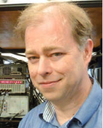 |
 |
High-intensity, ultrashort laser pulses can be used to bring electrons into relativistic motion, where the speed of the particles is no longer negligible compared to the speed of light. This extreme regime of light-matter interaction holds the promise of providing ultra-compact laser-driven particle accelerators and attosecond X-ray sources for scientific and medical applications. So far, the quest has been for the highest laser intensities. In his Advanced Grant project, Fabien Quéré (SLIC/LIDYL) aims to establish a new paradigm, by demonstrating the potential of laser-plasma interactions with sophisticated structured laser beams whose amplitude, phase and polarisation are shaped in time and space. Among other techniques, Quéré will use laser fields whose propagation directions rotate on a femtosecond time scale. |
| In extreme high-energy environments, such as neutron stars or pulsars in outer space, or the focus of ultra-intense laser beams in our laboratories, pairs of electrons and positrons (their antimatter counterpart) can be formed by conversion of electromagnetic energy into massive particles: a direct il- lustration of Einstein’s E = mc 2 . In his second Advanced Grant project, Luis Silva (IST) will use the world’s fastest supercomputers to identify the laboratory conditions under which electron-positron pair plasmas will form, and to simulate the extreme astrophysical condi- tions underlying the behaviour of pulsars. Emphasis will be given to observable signatures of the simulated processes, such as electromagnetic radiation and accelerated particles, in order to create new links between computational studies, laboratory experiments, and relativistic plasma astrophysics. |
 |
 ©ICFO |
Mechanical resonators based on carbon nanotubes are ex - ceptional sensors of mass and force. In his Advanced Grant project, Adrian Bachtold (ICFO) will take advantage of the sensing capabilities of nanotube resonators to study physical phe - nomena in unexplored regimes. Firstly, he will perform electron spin resonance (ESR) measurements on single molecules in an environment where the magnetic noise is reduced to an unprecedented level. Secondly, Bachtold’s team will carry out nuclear magnetic resonance (NMR) on single nuclear spins, which will be imaged using magnetic resonance force microscopy. Lastly, a completely new experimental approach to the investigation of superfluidity is proposed. A nanotube mechanical resonator will be used to probe the superfluidity properties of helium-4 layers adsorbed onto a suspended nanotube. |
2014
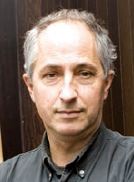 © ICFO © ICFO |
Signs of quantum coherence have been found in biological systems that are active in photosynthesis, suggesting that plants, algae, and bacteria may use quantum phenomena to efficiently store solar energy in the form of sugars. Recently, the group of Niek van Hulst from Laserlab-Europe partner ICFO were the first to detect coherent oscillations at physiological conditions in a single photosynthetic complex – the network of biomolecules involved in the capture, conversion and storage of solar energy. Van Hulst has now received his second ERC Advanced Grant for a project, LightNet, to find out if and how nature employs these unexpected large-scale quantum effects for photosynthesis. Advances in ultrasensitive and ultrafast experimental spectroscopy have revealed evidence of so-called ‘quantum coherence’ in the energy transfer of light-harvesting complexes of bacteria, algae and plants. This quantum coherence might be the reason for the remarkably high efficiency (95%) of photosynthetic light harvesting, as it would allow the complex to find the most efficient pathway for the energy transfer, but until recently it was thought that such quantum phenomena could never occur on the scale of biological systems. |
| Emissions from combustion processes are the main source of today’s air pollution and a major source of global warming. Cleaner and more efficient combustion devices thus have a huge positive impact on the environment. The Division of Combustion Physics of Lund Laser Centre (LLC, Lund, Sweden) has been studying the details of combustion processes for several decades now, and has built up one of the world’s best equipped laser-diagnostic labs with numerous state-of-the-art lasers and detectors. This year, Marcus Aldén, head of the Combustion Physics Division, has been awarded his second ERC Advanced Grant for his proposal: ‘Towards a deepened understanding of combustion processes using advanced laser diagnostics’. In (partially) transparent combustion devices, laser light can be used to study the combustion dynamics and probe the presence of different chemical species in the flame with a high temporal and spatial resolution, without influencing the combustion process itself. Marcus Aldén has been using lasers for this purpose for thirty-five years. With his ERC Advanced Grant, Aldén will develop new diagnostic techniques and perform several phenomenological combustion studies. |
 |
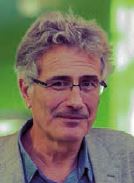 |
The Standard Model of physics is incomplete. Gravity is not understood at the quantum level, dark matter and dark energy are not explained, and (string) theories searching to cover these shortcomings are only consistent in higher-dimensional spaces, while only four of those dimensions are observed. Moreover, there is the unexplained mystery of finely tuned strengths of the fundamental forces, providing us with a Universe of complexity. With his ERC Advanced Grant project NEWPHYS-MOLECULES, Wim Ubachs from LaserLaB Amsterdam will perform precision metrology measurements on the H2 molecule in a search for new physics that might provide answers to these fundamental questions. The paradigm underlying Ubachs’ proposal is that effects of new physics – either related to unknown particles or to symmetry-breaking phenomena – will manifestthemselves as tiny shifts in the quantum level structuresof atoms and molecules, or in minute drifts over time ordependencies on environmentalconditions. Phenomena that can be explored also at the atomic scale in the low energy domain. |
2013
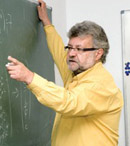 |
With his second ERC Advanced Grant, Maciej Lewenstein, Professor of quantum optics theory at ICFO (Barcelona), intends to develop a theory of classical Brownian motion of biological molecules on the surface of the cell membrane and in the cell, as well as a theory of quantum Brownian motion in an inhomogeneous environment. Furthermore, he aims at formulating new models of classical many-body open systems, and hopes to develop a theory of open-system quantum simulators. According to Lewenstein’s expectations, investigating the connections between these seemingly disparate project goals will lead to a unified theory of open systems. |
| In free-electron lasers (FEL), coherent electromagnetic radiation is produced by a relativistic electron beam moving through a periodic magnetic field structure. This rather special type of laser can be used to generate a particularly broad spectrum of radiation, ranging from microwaves to X-rays. As such, free-electron lasers are part of the so-called fourth generation of light sources. With his new ERC Advanced Grant, Victor Malka (LOA) intends to demonstrate the feasibility of a fifth generation light source: free-electron lasers injected with electron beams produced with laser-plasma accelerators. The project, called X-five, aims at delivering bright X-ray beams at a repetition rate of 10 Hz, and will be especially of interest for applications which do not require very high average brightness. Malka foresees applications in, for example,medicine, radiation biology, chemistry and security. |
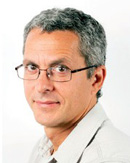 |
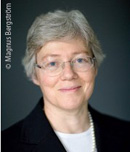 |
With her second ERC Advanced Grant, Anne L’Huillier from Lund Laser Centre, will try to answer a number of basic questions: how long does it take for an electron to escape its potential, how long does it take for an atom to become an ion once the electron has left the atom, and where, how and when do the electrons leave the atom? In order to answer the first of these questions, L’Huillier will measure photo-emission time delays for several atomic systems, using a tuneable attosecond pulse system. To study the ionisation process, XUV pump/probe experiments are required to find the transition between so-called non-sequential double ionisation (where photons are absorbed simultaneously and both electrons emitted at the same time) and sequential ionisation (where the electrons are emitted one at a time). Finally, L’Huillier wants to combine coincidence measurements with angular detection, allowing to characterise (two-particle) electronic wavepackets in both time and momentum. |
2012
| Prof. Costas Soukoulis (IESL-FORTH, Heraklion, Crete, Greece and Ames Lab & Iowa State University, Ames, Iowa, USA) has been awarded an Advanced Grant by the European Research Council (ERC) to promote the development of photonic crystals, metamaterials and plasmonics. The novel materials will enable the realization of innovative electromagnetic properties unattainable in naturally existing materials. The implementation of the ERC Advanced Grant project requires novel ideas, advanced computational techniques, nanofabrication approaches and experimental testing. According to Soukoulis, the broad expertise of his team and their pioneering contributions to photonic crystals, metamaterials and plasmonics qualifies them for facing the challenges, and will ensure the maximum possible success of the project. |
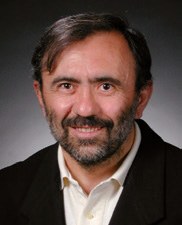 |
2011
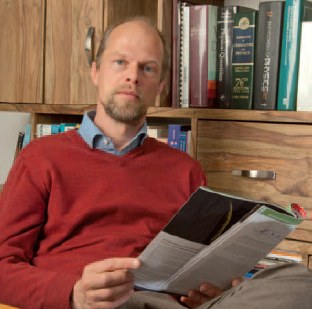 |
Diederik Wiersma, currently director of LENS in Florence, has received an ERC Advanced Grant of 2.2 million euros. Wiersma intends to use the grant to create a whole new research area, photonic micro-robotics, by creating microscopic structures which can perform robotic tasks and are entirely powered and controlled by light. For the project, the expertise available at LENS on complex photonic materials and direct laser writing will be combined and applied to create microstructured patterns in liquid crystal elastomers: rubber-like polymers with liquid crystalline properties. Direct laser writing will allow Wiersma and his team to realize structures with sub-micron resolution and nanometre scale accuracy. By using elastomers, it will be possible to create robotic elements that respond mechanically to optical triggers. These elements will be combined with static (photonic) structures, opening up a new strategy to make robots of various kinds. |
| Giulio Cerullo, professor at the Politecnico di Milano, has received an ERC Advanced Grant of 2.5 million euro. The grant will allow him to develop a method to study DNA and proteins using ultrashort ultraviolet laser pulses. The proposed technique, 2DUV spectroscopy, can be seen as an extrapolation of the well-established 2D Nuclear Magnetic Resonance technique, which has been a great help to structural biology as it allows to resolve complex molecular structures with high spatial resolution. Using IR and visible laser light, 2D spectroscopy has already had a large impact on our understanding of the structure of peptides and proteins, as well as the mechanisms of energy relaxation in photosynthetic complexes and semiconductors. | 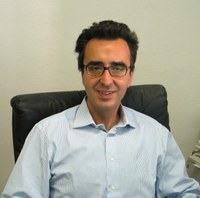 |
2010
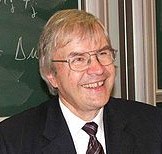 |
Theodor Hänsch, Director at MPQ Garching and professor of Experimental Physics at the Ludwig-Maximilians Universität in Munich, Germany, has been awarded an ERC Advanced Grant. Hänsch will use the grant of 2.39 million euros for new applications of frequency combs, of which he has been one of the inventors. In 2005 Hänsch received the Nobel Prize in Physics for his contributions to laserbased precision spectroscopy. A laser frequency comb makes it possible to measure the frequency of any laser source with a precision that enables stringent tests of the fundamental laws of physics. This technique also paves the way for the creation of all-optical clocks and improved satellitebased navigation systems. Frequency combs are currently used by hundreds of laboratories worldwide. |
| Prof. Rienk van Grondelle (LaserLaB Amsterdam) received an ERC Advanced Grant of almost 3 million euro, which will fund his research into the role chlorophyll-binding proteins play in determining the success of photosynthesis. The research will hopefully lead to the implementation of photosynthesis in food and/or fuel production. The biological machine driving photosynthesis comprises an intricate constellation of pigment-protein complexes that includes chlorophyll and carotene. The success of photosynthesis depends on ultrafast events (on the order a picosecond), in which solar energy is converted into electrical energy. The study will be conducted using ultrafast and other spectroscopic techniques housed at the LaserLaB Amsterdam and the CEA Saclay, where part of the project will be carried out in collaboration with Dr. Bruno Robert. |
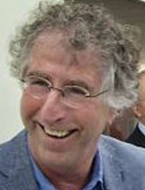 |
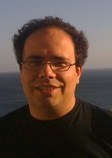 |
Dr. Luis Silva, Instituto Superior Tecnico (IST, Lisbon), has been awarded an Advanced Grant from the European Research Council to explore particle acceleration in relativistic shock waves driven in astrophysical scenarios or by ultra-intense lasers. The team of Luís Silva at GoLP/Instituto de Plasmas e Fusão Nuclear at IST, one of the new partners in LASERLAB-EUROPE II, aims to study and to identify the key mechanisms for particle acceleration in relativistic shocks with massively parallel numerical simulations. It has been proposed that acceleration in collisionless shock waves is the critical mechanism for the acceleration of cosmic rays, the most energetic particles in the Universe, but the acceleration mechanisms in these nonlinear waves remain to be clearly identified. The work to be developed in the ERC Advanced Grant "Accelerates" aims to understand the physics underlying shock formation and the microphysics determining particle acceleration in relativistic shocks. The IST team will also address the possibility to generate these shock waves using ultra intense lasers with the goal of further exploring shock acceleration in laboratory conditions and of harnessing shock acceleration to optimize novel laser-based energetic particle sources. |
2009
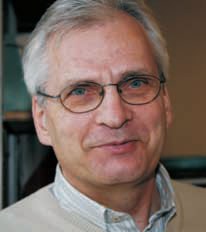 |
Prof. Marcus Aldén from the Combustion Physics Group of Lund Laser Centre in Sweden got 2.5 million euros for studying combustion processes in gas turbines and engines with lasers. Due to turbulence, the conditions in the combustion flame vary rapidly in time and from one place to another. To study the combustion process, a spatial resolution of the order of micrometers and timescales of microseconds is required. Aldén will use 'high reprate' lasers and several types of infrared spectroscopy to investigate the combustion flames in a non-intrusive way, thereby generating the knowledge needed to enhance the efficiency and reduce the amount of pollution resulting from burning fuels. |
| Prof. Thomas Elsaesser from the Max Born Institute for Nonlinear Optics and Short Pulse Spectroscopy in Berlin received a grant of 2.49 million euros for a project aiming at elucidating processes which determine the properties of hydrogen bonds in molecular systems. Elsaesser studies ultrafast processes in condensed matter. His project is devoted to unraveling changes of molecular structures on the length scale of a chemical bond and the ultrashort time scale of molecular motions. Within the project, novel methods of ultrafast optics in a wavelength range from the far-infrared to hard x-rays will be applied for investigating hydrogen bonds. A key goal consists in measuring molecular structures in realtime by initiating and reading out structure changes with ultrashort light pulses. >> Read more |
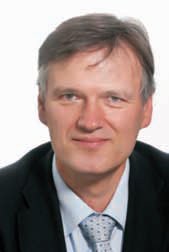 |
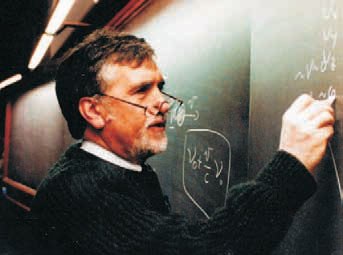 |
Prof. Massimo Inguscio from the European Laboratory for Nonlinear Spectroscopy (LENS) in Florence will use his Advanced Grant to study disorder in ultracold quantum gases. Disorder is ubiquitous in nature and has a strong impact on the behaviour of many physical systems. However, due to unavoidable interactions, the effect is hard to study in real condensed-matter systems. Inguscio will use ultracold atomic quantum gases, both bosonic and fermionic, as model systems to understand the physics of disorder. These quantum gases are easily manipulated and a variety of diagnostic techniques is available to gain detailed information on the system. |
| Motion in the microcosm is to be recorded by a team at the Laboratory of Attosecond physics of LMU and MPQ by means of ultrashort flashes consisting of individual elecrons. The project is being funded with 2.5 million euro in an "ERC Advanced Investigator Grant" awarded by the European Union to Prof. Ferenc Krausz. Electrons, atoms and molecules play the leading roles in the films to be produced by a team of laser physicists around Prof. Ferenc Krausz and Dr. Peter Baum in the project “4D Imaging of Fundamental Processes on the Atomic and Sub-atomic Scales”. >>Read more |
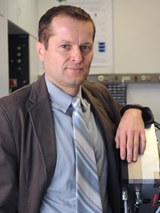 |
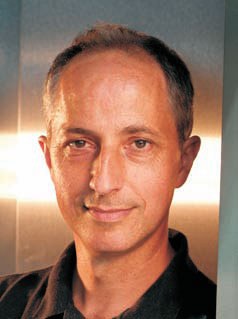 |
Prof. Niek van Hulst (ICFO, Barcelona) has been awarded one of the 2009 European Research Council Advanced Investigators Grants to pursue his project "Nano-Optical Antennas for Tunable Single Photon Super-Emitters". The ERC Advanced Grants aim to allow top-level established scientists to carry on with pioneering frontier research projects. According to Van Hulst, recent advances by PhD- and Postdoctoral researchers, together with the excellent reputation of LASERLAB-EUROPE partner ICFO, were crucial in obtaining this prestigious grant of 2.5 million euro. >> Read more |
2008
| Professor Anne L’Huillier’s work at the Lund High-Power Laser Facility of the Lund Laser Centre (Sweden) has chiefly been on the generation of high harmonics and attosecond pulses, but with the proposal that got her the Advanced Investigators Grant, she wants to push attosecond physics into a new direction. “The idea is to create controlled sequences of pulses, and to use them to coherently control electronic processes.” The concept of coherent control stems from the chemistry community, says L’Huillier. “The idea of coherent control in chemistry is that you force chemical reactions to go in a certain direction.” In chemistry, this concept has been demonstrated to a certain extent. Instead of chemical reactions, though, L’Huillier would like to control electronic processes. >> Read more |
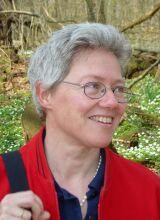 |
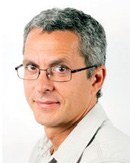 |
Professor Victor Malka from the Laboratoire d’Optique Appliquée (LOA) in Palaiseau near Paris received his Advanced Investigators Grant for a proposal appropriately called PARIS (PARticle accelerators with Intense lasers for Science). In the coming five years he will use the money to develop compact particle accelerators based on the wakefield of laser pulses. Shining a laser into a plasma creates an electric field that can be used to accelerate an electron beam. Using this method, one can produce electric fields that are up to 10,000 times larger than those used in conventional particle accelerators. This means one can create accelerators that are much more compact than accelerators based on other techniques. >> Read more |
| Prof. Dr. Mauro Nisoli from the Politecnico di Milano was awarded an Advanced Investigators Grant from the European Research Council for 'exceptional established research leaders' last year. In winning this grant of 2.44 million euros, he joins three researchers from LASERLAB-EUROPE who received that same grant in the first round. Nisoli is planning to take attosecond laser physics to the next level. >> Read more |
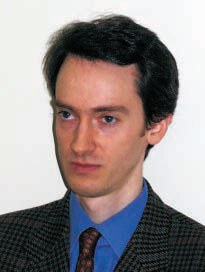 |
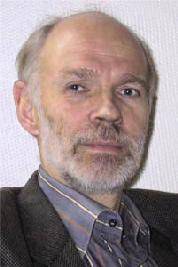 |
The Chemical Physics group in the Lund Laser Centre, led by Professor Villy Sundström, focuses on research related to sunlight: they look for new materials for solar cells, and are trying to mimic natural photosynthetic systems in order to produce fuel – such as molecular hydrogen – with sunlight. They also investigate the harmful effect that sunlight has on human skin. Sundström says this research involves studying both the structural and the electronic dynamics of the reactions. The Advanced Investigators Grant will be used to develop a table-top setup in which sub-picosecond x-ray pulses are employed to probe the dynamics of reactions. >> Read more |


